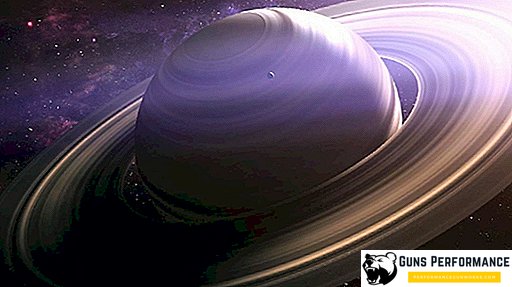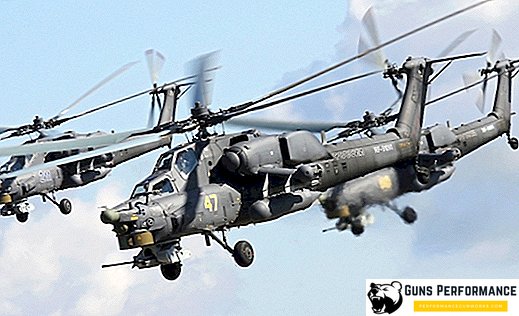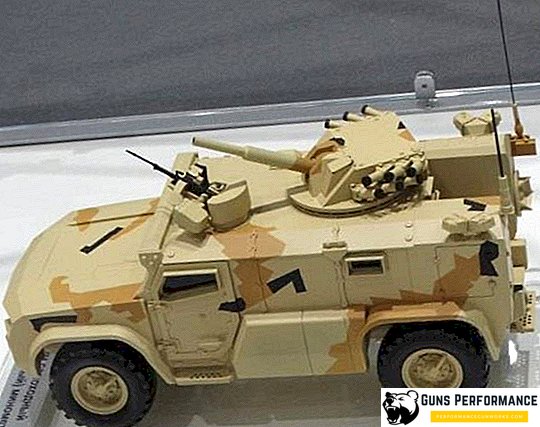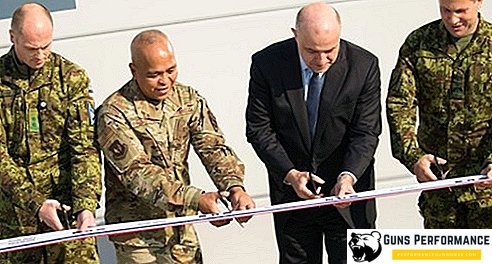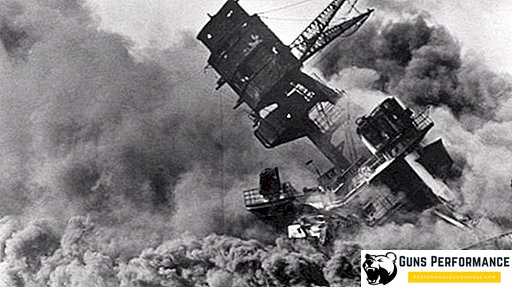
The history of the Second World War contains many bright pages that have been decisive for the course of military operations and have become the subject of detailed study. Japan’s attack on the US naval base at Pearl Harbor on December 7, 1941 can rightly be called one of these events, which became a landmark for history and determined the subsequent course of the military campaign in the Pacific.
Background attack
The combined attack of Japan on the US Navy directly at the base of its deployment was the result of a long and painstaking work of the Imperial General Staff. There are quite a few answers to the question of why the American naval base became the target of the attack. The main reason for the surprise attack lies in the desire of the Japanese to destroy the American Pacific Fleet with one powerful blow. A successful attack would allow the Japanese armed forces to freely pursue subsequent expansion in the Asia-Pacific Military Theater.
After the fall of France, Japan took advantage of a convenient moment and occupied South Indochina. In response to the Japanese expansion, the United States and Great Britain imposed an oil embargo on oil exports to the Land of the Rising Sun. These economic sanctions have seriously undermined Japan’s economic and industrial potential. The navy of this country was entirely dependent on oil exports, and similar measures by America and their European allies hit hard the combat capability of the Japanese Empire. The Japanese began to frantically search for a way out of this situation. The decision came by itself. Together with the army, the Japanese fleet was to capture the oil-rich islands of the Indonesian archipelago. Naturally, such a step could be decided only in view of the likely reaction of the Americans to such actions. The presence of the American fleet in Pearl Harbor put the rear Japanese communications at risk.

An option was adopted that called for the initial destruction of a potential threat in the form of US naval forces in the Pacific. Further, with a favorable result, it was possible to proceed to the systematic occupation of the islands of Dutch India. The Imperial Headquarters wanted to seize the initiative in order to further dictate its strategy of war and peace in this theater of operations.
It was possible to take the Americans out of the game and deprive them of the navy either as a result of a general naval battle, or by a sudden blow. This position was held by the General Headquarters of the Country of the Rising Sun, however, the naval command considered its own naval forces not strong enough to achieve success in direct combat with the US fleet. Preference was given to delivering a preemptive strike against the forces of the Americans directly in places of deployment of the fleet. In the spring of 1941, the entire US Pacific Fleet was relocated to the Hawaiian Islands, thereby taking control of the entire central part of the Pacific Ocean, so Japan attacked Pearl Harbor not by accident. This was preceded by a series of military and political events that directly or indirectly influenced the distribution of forces in this region of the globe.
Pearl Harbor Japanese Strike

The main task, which was set before the naval command of the Imperial Navy, was to deliver a combined strike at the US Navy in the Pacific Ocean in Pearl Harbor Bay. Attacking American ships was planned in two ways:
- a blow from under the water, using mini-submarines for this;
- strike marine aircraft based on aircraft carriers.
The main objective of the Japanese military were the American aircraft carriers. The task was assigned to the submarine forces to secretly sneak into the internal raid of the American base and to be able to hit the most important US ships with a torpedo. Aviation originally had to cause a diversion, attacking the air defense forces of the naval base. If necessary, the emphasis could shift to the actions of naval aviation, which was supposed to damage the enemy ships at the anchorage sites. The strike was to not only reduce the combat capability of the American fleet, but also permanently block the exit from the base, thereby depriving the Americans of the opportunity to withdraw their fleet to operational space. In order to understand the importance of the decision made by the Japanese and why the base in the Hawaiian Islands was chosen, it is enough to assess the location of the naval base Pearl Harbor on the map.
Forces of the parties before the start of the battle

A prominent role in the preparation of the attack on Pearl Harbor is assigned to Admiral Yamamoto, who built the entire Pacific strategy of the Imperial fleet. It was Yamamoto who was committed to the idea that the Japanese should attack first. The Japanese admiral became the inspiration for the idea of a surprise attack by the aviation forces of the US Navy at its main base. The executive and commander of the operation was appointed Admiral Nagumo. According to the calculations of the Japanese military, the main force that was able to perform the assigned tasks were the Japanese aircraft carriers. To participate in the operation, it was planned to use all 6 aircraft carriers currently available in the Imperial fleet.
The operation involved the best pilots collected from all aviation units of the Navy. The number of aircraft designated for participation in the raid was a huge number - almost 400 units. The composition of the strike of naval aviation included dive bombers Aichi D3A1 (type "99"), torpedo bombers Nakajima B5N2 (type "97"). Cover the attacking aircraft were Japanese fighter jets Mitsubishi A6M2 (type "0"), known worldwide as "Zero".
The maritime component of the future operation consisted of cover ships and 30 submarines. Five of these submarines were miniature mini submarines, operated by a crew of 2-3 people. To the site of the attack, the boats were to be delivered by Japanese destroyers, after which the submersibles had to penetrate into the bay on their own.
A large role in the success of the operation was assigned to the regime of secrecy. For the impact connection, a bypass route was laid to the site of the operation. Before the first aircraft took off from the decks of the Japanese aircraft carriers, the Japanese squadron traveled more than one thousand miles. For all 10 days of the campaign, the Americans did not manage to find such a large mix of ships in the ocean, and they completely lost sight of the Japanese. Japanese aircraft carriers covered two battlecruisers in the sea, two heavy and one light cruiser. Escort connections provided by 9 destroyers.

The command of the US Pacific Fleet, Admiral Kimmel, and the high command right up to the Joint Chiefs of Staff were completely unaware of the impending attack. At that time, all the main forces of the Pacific Fleet were in Pearl Harbor Bay, including:
- 8 battleships;
- 2 heavy cruisers;
- 6 light cruisers;
- 30 destroyers and destroyers;
- 5 submarines of various classes.
Almost 400 aircraft carried out air cover of the base.
With such a large and powerful combination of sea and air forces, the American command did not even suggest the likelihood of an attack from the base from the sea. Saved the Americans from the catastrophic consequences and the complete defeat of the absence on the basis of aircraft carriers. Three of the aircraft carrier’s fleets, Saratoga, Lexington and Enterprise, were at sea and undergoing repairs on the US West Coast. Information about how many aircraft carriers are in the harbor of Pearl Harbor, the Japanese missed. The battle took place mainly between American ships, air defense forces of the naval base and Japanese naval aviation.
The beginning of the attack on Pearl Harbor
The encrypted order received by Admiral Nagumo, containing the phrase “Climb Mount Niitaka”, meant that the attack on Pearl Harbor naval base of the Pacific Fleet should take place on December 7th. This date was a landmark, determining the entire subsequent course of the Second World War.

The Japanese ships were 230 miles north of Oahu when the first-wave planes took off. The main striking force was 40 torpedo bombers armed with torpedoes capable of striking enemy ships in shallow water. Together with the torpedo bombers, another 49 aircraft were raised into the air, each of which was armed with one 800-kilogram torpedo.
To support the torpedo bombers, a 51 dive bomber, equipped with 250 kg bombs, took off with them. Cover carried 43 fighter "Zero".
This entire air armada appeared over the island of Oahu at 7-50. Five minutes later, the first explosions were heard in the naval base harbor. At 8:00 am, Admiral Kimmel conveyed an open message to all ship commanders, commanders of the Asian and Atlantic fleet: "An air attack on ships is not a drill." The desired surprise effect for the Japanese was achieved, although on the approach to the main base of the American fleet the Japanese aircraft carriers were noticed by the US military courts.

American ships were concentrated in a small enclosed area of internal raid. Battleships lined up like in a parade, one after another. Cruisers and destroyers stood huddled against the quay wall. The large density of ships, the absence of half the crew on many ships and the early attack time turned the battle into a full-scale massacre. Japanese pilots went on the attack as a training exercise, hitting American ships with torpedoes and bombs. Those ships that managed to avoid torpedoes attempted to leave the harbor in order not to die in the internal roadstead. The main fighting force of the US Pacific Fleet, the battleships Oklahoma, California, West Virginia and Arizona were sunk. The battleships Tennessee and Nevada were badly damaged, which the Americans had to run aground upon leaving Pearl Harbor Bay.
In addition to the linear fleet, the Americans lost 4 destroyers and one hospital ship. Severe damage received two cruisers. During the first attack, the Japanese pilots managed to paralyze the air defense of the American base, destroying 188 airplanes on the ground. Only the second wave of Japanese aircraft, which arrived to finish off the remnants of the defeated fleet, came across the organized resistance of American pilots.
The result of the attack on Pearl Harbor

As a result, the battle ended with the almost complete destruction of most of the battleships of the Pacific Fleet and severe damage to other warships. On the water and on land during the sudden attack of Japan, the Americans lost 2,403 people. Almost a third of all the dead were the crew of the dead battleship "Arizona". Today, a memorial in the Pearl Harbor Bay, installed on the site of the death of "Arizona" reminds of the past tragedy. After the Japanese attack, which cost the Japanese fleet 29 shot down aircraft and four sunken mini-submarines, the American fleet was forced to go on the defensive for six months in the entire Pacific Naval Theater.



